With this guide, you will be able to determine whether or not your blade is dull or sharp enough for the task at hand. The answer lies within the cutting edge of your kitchen knife. It should be able to slice through food easily without any resistance. Sharp knives are essential because they make cooking easier, more enjoyable, and safer. If you want those mouth-watering slices of freshly made pork roast or seasoned bread to entice your guests, you need a sharp kitchen knife.
How to Test for Knife Sharpness?
We have put together some of the more straightforward tests you can do on your own. Please keep in mind you are testing for the sharpness of a blade. You should always take care with even a dull knife to avoid any unwanted accidents. Here are the best methods for testing your kitchen knife sharpness.
1. The Paper Test
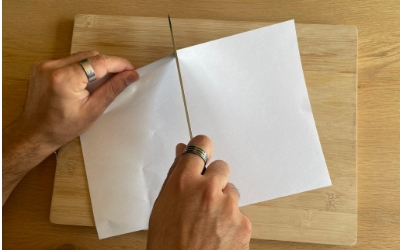
This is one of the easiest ways to test a knife. Just grab a piece of paper, press it down against your cutting board or countertop, and cut with a single stroke. If you are using just the right amount of pressure, your blade should make an immediate cut right through the paper without any effort on your part. On the other hand, if it rips and tears, then you probably have a dull edge.
You can also determine if there are any micro parts of the edge that are broken. If the blade gets stuck in the paper along a particular part of the edge, that is where you may need to spend more time sharpening.
2. The Tomato Test
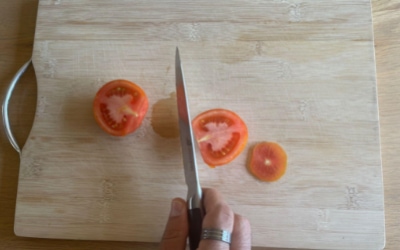
The tomato test is simple. Take your kitchen knife, and cut a tomato in half. If it slices through easily, then you are all set! Your knife is sharp enough. However, if it does not slice cleanly through the fruit but instead just sort of drags along the surface, then it is time to sharpen up your kitchen knives.
3. The Fingernail Test
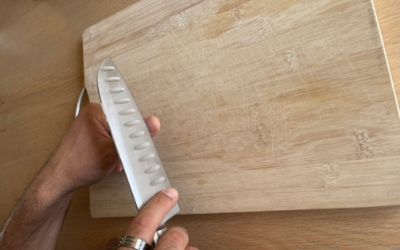
Again, please be careful when you try a test like this. All you need to do is stick out a finger, preferably the index or thumb, and hold the knife’s edge perpendicular to your finger. Think of this as a Swiss cross.
If the blade is able to cut into your fingernail without the addition of any pressure (please do not push down in any way), then it is probably sharp enough for most other ingredients.
4. The Shave Test
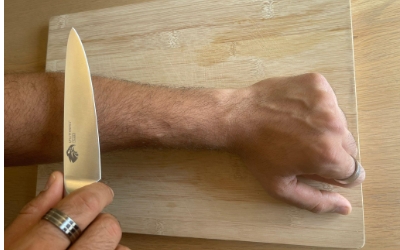
This test also involves your body, so please use caution. All you need to do is hold out your arm and see if gently running your blade along your arm cuts the hair. If they fall off like you just experienced an excellent shave from a barber, then your knife is already sharp enough to work within the kitchen. After this test, be sure to wash your blade, so you do not gross out your guests with arm hairs in their food!
Why is a Sharp Knife Safer than a Dull One?
Sharp knives are safer than dull ones because a sharp knife can be used to cut food more efficiently and precisely. When using a dull knife, you have to apply more pressure and force to get the job done. This increases your chances of accidentally cutting yourself while trying to make a cut or even dropping the knife altogether.
The sharper edge means there’s less friction between the blade and whatever it comes in contact with, and less friction means less slippage! Sharper knives create more refined cuts on your food. The visual appeal of food is just as important as taste, smell, and texture. You want to cut food into the shapes and sizes that your guests will appreciate the most, which requires a sharp edge.
Read now >> What is the sharpest knife in the world?
Conclusion
You should regularly cut something with your knife to test its sharpness. A tomato or onion is excellent because they are slightly softer and provide enough resistance when drawing your blade across the surface. Apples and carrots work just as well in a pinch, but those have more of a chopping motion.
You need to sharpen your knife when it begins to get dull to prevent any unwanted injuries. We suggest using a honing stone or steel rod for sharpening. This reforms the knife’s edge instead of taking away metal to create a new edge.
Either way, proper knife maintenance is vital in the kitchen or in the field. Treat your tools with respect, and you will be able to create all kinds of incredible meals that will leave your guests wanting more!

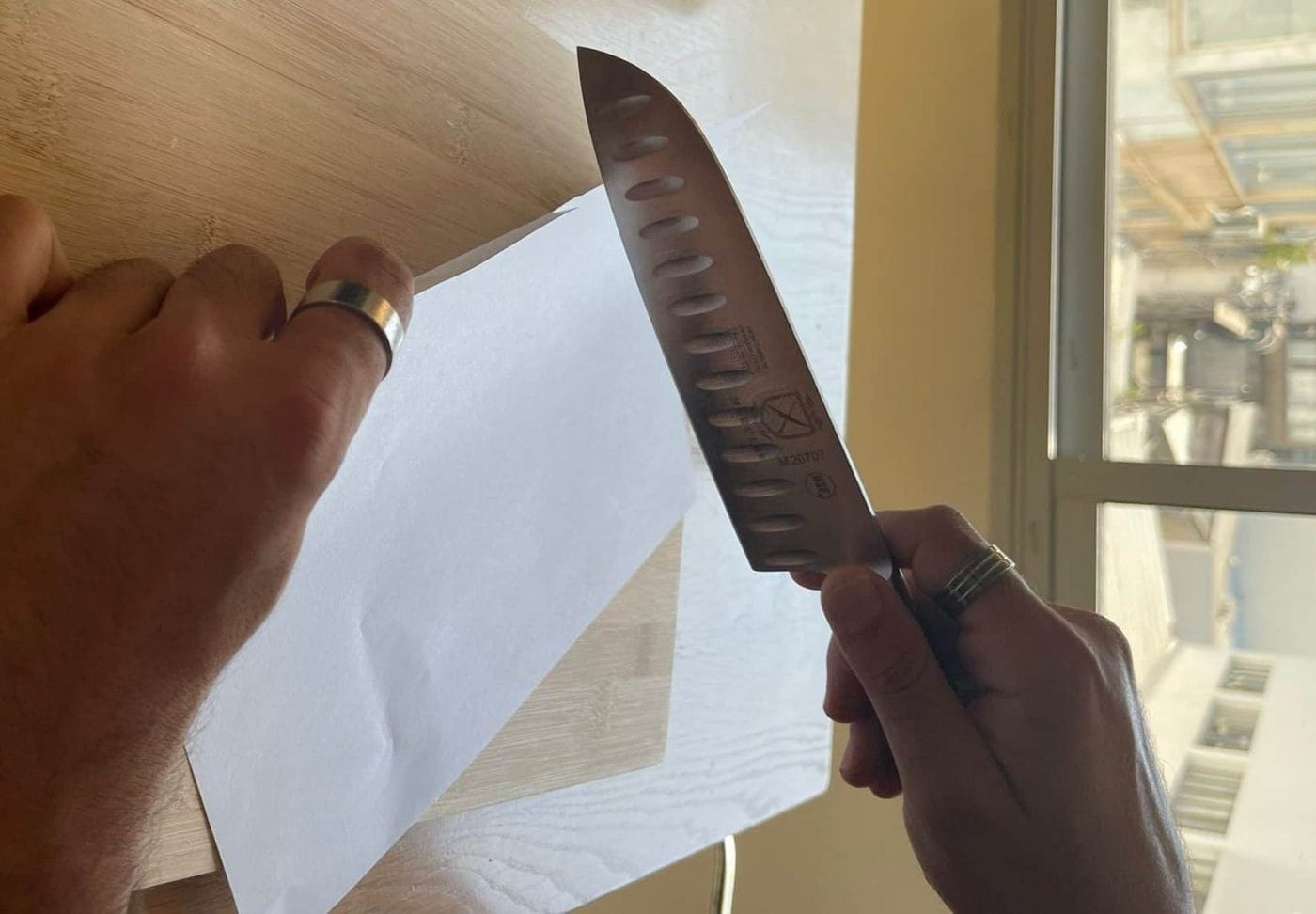


Post Your Thoughts